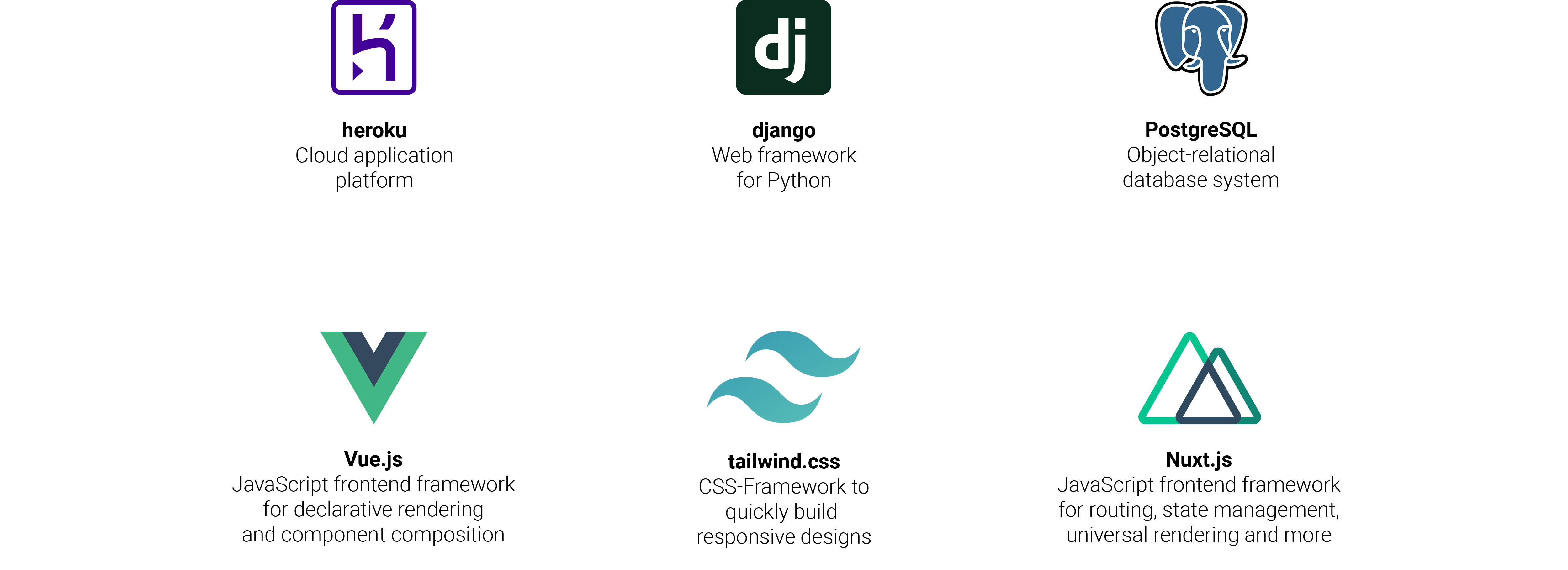Technologies

Architecture
The following graphic describes the software architecture of the game “The Mole”.
There are two basic elements in the architecture, a backend server and a frontend server. Both our servers are deployed on the cloud application platform heroku. Furthermore, all instances communicate using Socket.IO. SocketIO is a library for real-time web applications that enables bidirectional real-time communication between web clients and servers.
In the backend, we used Python as a programming language with the django web framework. Our data is stored in the object-relational database system PostgreSQL. This is supported by Django as well as by Heroku.
In the frontend we used Vue.js, a JavaScript frontend framework for declarative rendering and component composition. Furthermore, we extended Vue.js with Nuxt.js, a JavaScript frontend framework with functionalities like routing, state management, universal rendering and more. To quickly build responsive designs, we used the CSS-Framework tailwind.css.
Clients can open the game as a progressive web app. This means that the game is available as a responsive website but can additionally be used like an app. When the player connects to the frontend, they basically create their own client. That helps us with communication.
